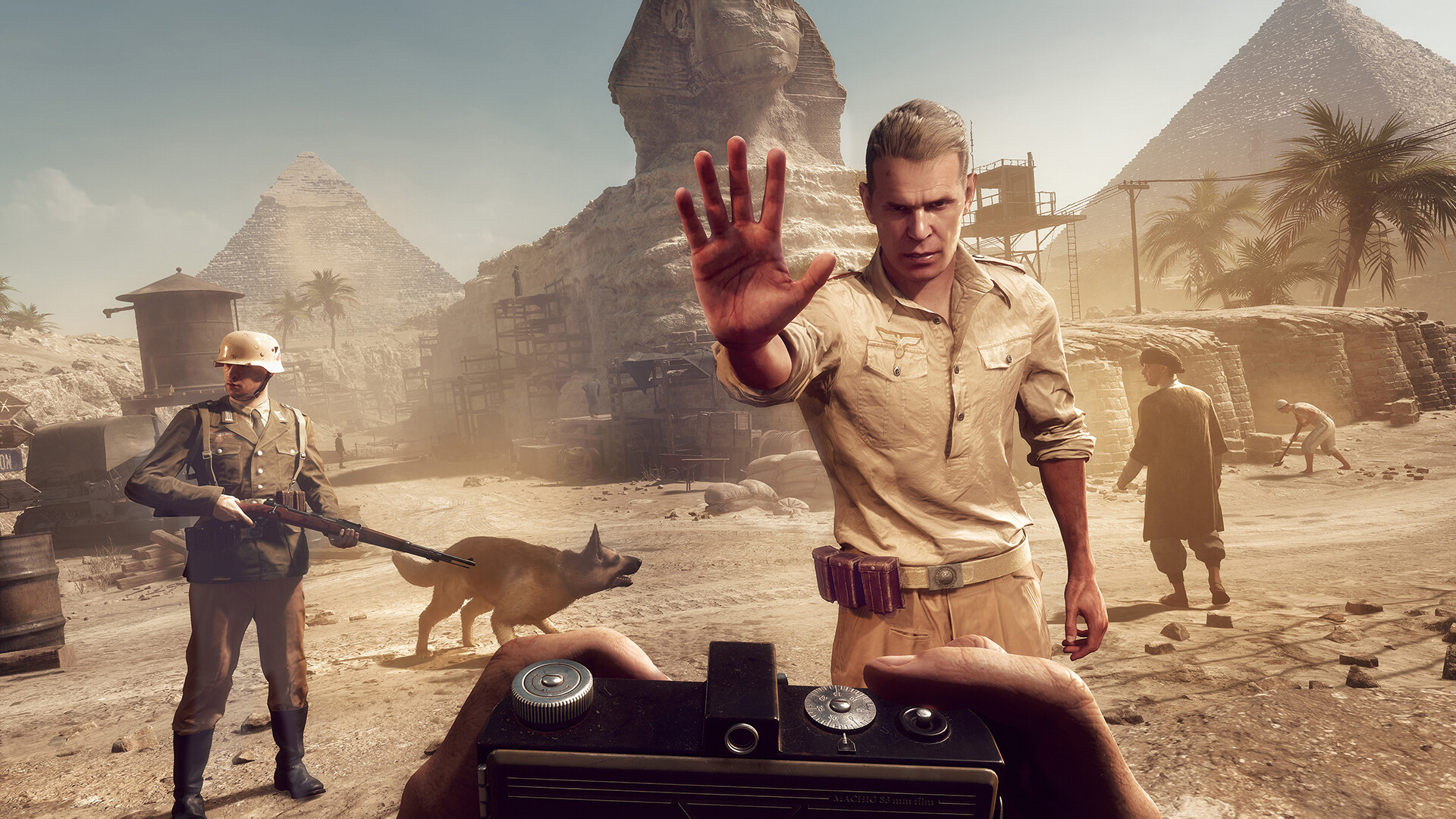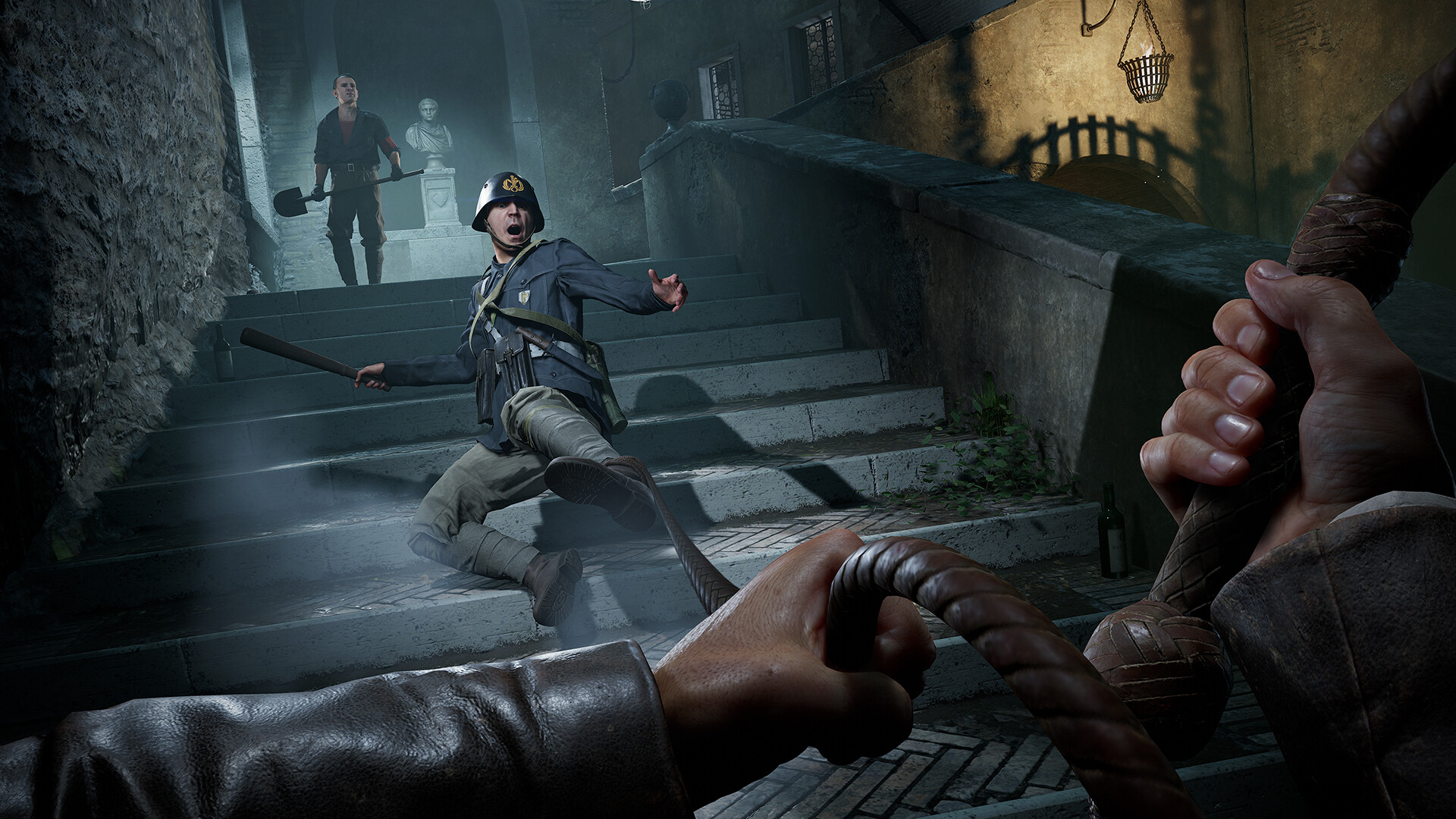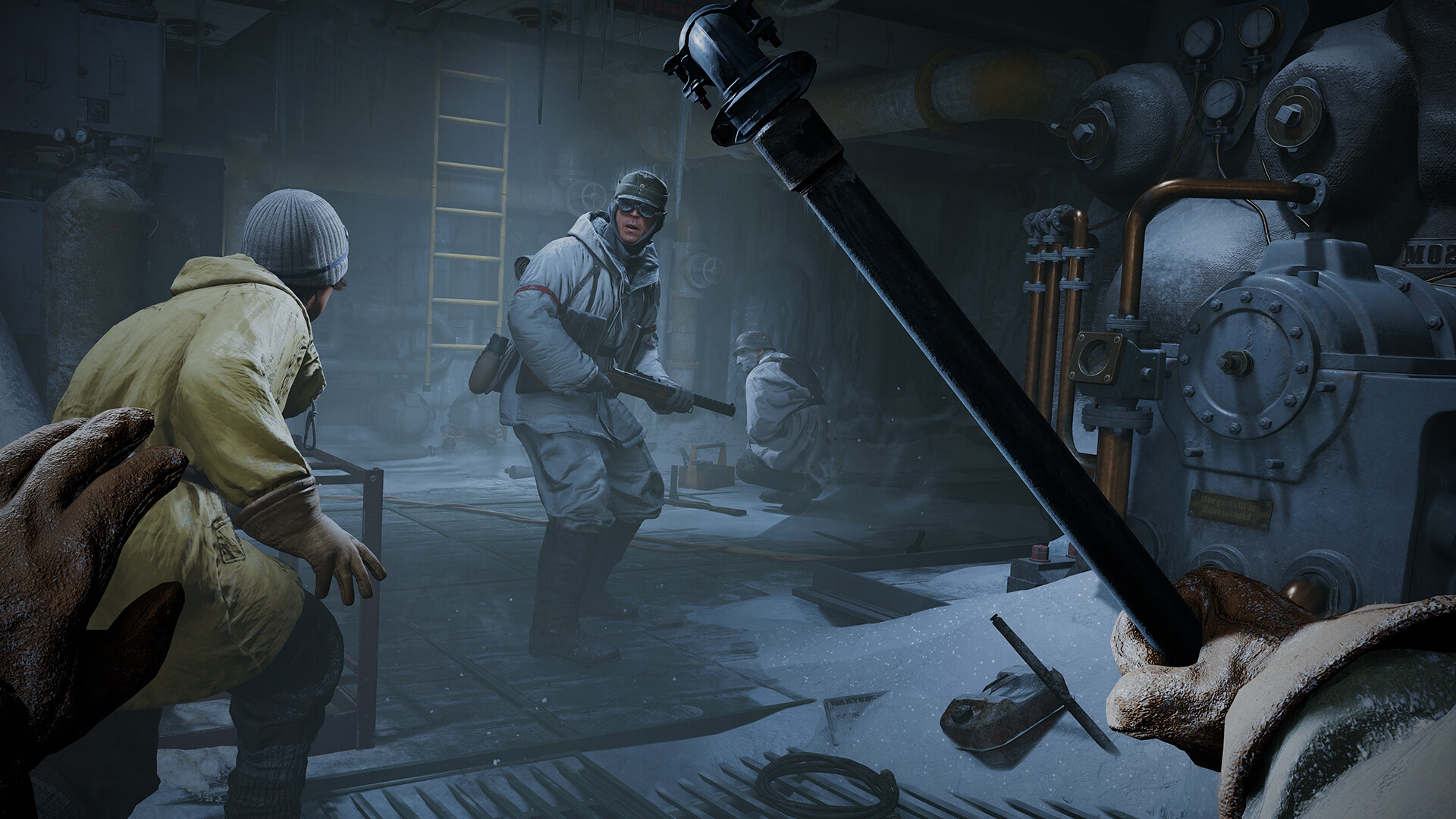One of the fixtures of entertainment journalism is the roundtable interview. The table may be literal or metaphorical, but basically seats one or two creative luminaries and a whole bunch of reporters. Each journalist typically gets to ask one question each, so they’d better pick it well.
It was in one such scenario last year that somebody asked MachineGames: why is Indiana Jones and the Great Circle primarily played from a first-person perspective, rather than third-person?
In response, the developer cited its long history of first-person Wolfenstein games; the benefit of getting a close-up view when uncovering weird artifacts and solving puzzles; the intention that you don’t just play Indiana Jones, but rather become him.
If MachineGames seemed well-prepared to answer, it probably was. The question reflected not just one journalist’s curiosity, but a theme that had recurred in public discussions of the game ever since its first trailer.
It’s a preoccupation that always rang a little odd to me. Why shouldn’t we step directly into Indy’s dusty old shoes? I’m convinced that players’ reservations had less to do with what Indiana Jones and the Great Circle ought to be, and more to do with what came before it. Uncharted had been a third-person series. As had Tomb Raider.
New perspectives

There are strong arguments for telling an action-adventure story with an out-of-body camera, of course. Traditionally, platforming is much more tolerable in third-person, giving you far more visual information with which to judge your jumps and landings. And if your protagonist is a famous character, well: you can appreciate the logic of keeping them on-screen at all times. But once the perspective of a game is predetermined by its genre, rather than the design goals of its developer, we start to miss out on a whole load of forward-thinking experimentation.
Thankfully, MachineGames persisted. Even though it “took years” to nail, the choice of first-person was never in question for the studio. “We love that perspective,” said design director Jens Andersson in a Develop:Brighton talk this month. “It’s a great way of telling stories.” The resulting game – a five-star experience, according to our Indiana Jones and the Great Circle review – is a masterclass in matching character to mechanics. One achieved without flashing Harrison Ford’s early-80s face every five minutes.

In what other game is the journal that tracks your objectives a leather-bound diary, left behind by Marion Ravenwood “for your next adventure”? One stuffed messily with sketches of ruins and photographs of inscriptions, visibly thumbed by a pair of worn hands as you flick from one side quest to the next? Then there’s the combat loop, defined by the speaker-breaking crack of your whip, and a pervasive sense of bumbling chaos. Stealth is encouraged, but discovery often ends not with death, but the clanging punchline of a spade connecting with a blackshirt’s cheek. Guns are provided, but feel deliberately cumbersome and counterproductive. During my first real firefight, deep into the second act of the game, Indy exclaimed: “Jeeesus!”. The occurrence was as shocking to him as it was to me.
In other words, it’s impossible to forget who you are as you stumble and befriend your way towards the cinematic conclusion of the Great Circle. And as you do, the benefits of that first-person perspective become very clear. There’s no way an Uncharted could have simulated the genuinely frightening claustrophobia of an ancient Egyptian tomb rapidly filling up with sand – a trap escaped only by wading across the shifting, granular terrain and crawling into a stone shaft barely big enough for a man. And it’s hard to imagine Tomb Raider, with its distant camera, pulling off the tactile horror of creeping around a pitch-black treasure room without stepping on a single jangly coin – drawing the attention of a waiting giant, like Smaug atop his trove in the Lonely Mountain.

Those of us who love the first-person perspective do so because it’s like plunging into a deep pool, with all the associated shock and wonder that would entail. When you truly embody a character, you cease to watch them and start to be them. You are shaped by their world, which presses in against you on all sides, and begin to understand why they act the way they do.
For cinematic adaptations that adopt first-person, it’s as if you’ve woken up behind the screen, rather than simply started to steer the actors on it. It’s the very magic that powers Alien: Isolation – a licensed game of such lingering power that it’s getting a sequel a decade on. And it’s the reason the Chronicles of Riddick game, Escape from Butcher Bay, has a reputation that far outstrips that of the Vin Diesel films it was tethered to.
It’s worth noting that Riddick was developed by the core team that would go on to make the Great Circle. And wondering whether, next time, we should consider simply trusting the experts when it comes to making the adventures of famous characters interactive. On matters of perspective, studios like MachineGames know the best angle to take.











![PUBG Mobile Mod Menu – [PUBG Hack App December 2021] PUBG Mobile Mod Menu – [PUBG Hack App December 2021]](https://i1.wp.com/pubgmobileupdate.com/wp-content/uploads/2021/11/Download-PUBG-Mobile-Mod-Menu-Apk.jpg?w=1200&resize=1200,0&ssl=1)
Leave a Reply